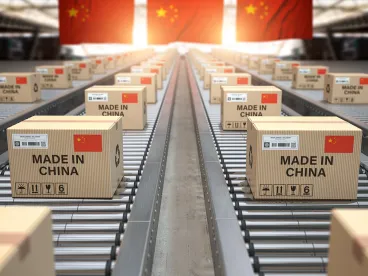As we say goodbye to the Year of the Ox and usher in the Year of the Tiger, it is a good time to reflect on the past year, a year where the authorities continued to make progress in the area of food packaging. In addition to the notable increases in the number of food-contact materials petitions that were reviewed by the China National Center for Food Safety Risk Assessment (CFSA), China’s National Health Commission (NHC) published several key draft standards on food-contact materials and articles, calling for comments from industry. The following is a summary of the progress we saw in 2021 and some thoughts about what we can hope to see in 2022.
GB Food Packaging Standards
In October 2021, NHC published a number of draft GB food packaging standards for comment [1], including a few key standards on food-contact materials of plastics, rubber, and adhesives as follows:
-
Draft Standard on Food-Contact Use Plastic Materials and Articles consolidates the current GB 4806.6-2016 (Plastic Resin Standard) and GB 4806.7-2016 (Plastic Materials and Articles Standard) and sets forth new requirements for starch-based plastic materials and articles.
-
Draft Standard on Food-Contact Use Adhesives is the second draft for public comment since 2019. Compared with the first draft, provisions on migration testing on finished food-contact materials and articles have been removed. This Draft Standard also updates the two lists of base raw materials permitted for use in both direct and indirect food-contact adhesives.
-
Draft Standard on Food-Contact Use Rubber Materials and Articles removes requirements for food-contact silicone rubber as it appears that China will establish a separate standard on silicone rubber. The positive list for silicone rubber in the current rubber standard also is removed in the Draft.
A more detailed discussion on these draft food packaging standards can be found in our previous China Regulatory Matters (CRM) article titled “Breaking News: China Publishes Key GB Standards on Food Packaging for Public Comments.”
Petitions
NHC continued to actively review and approve food-contact petitions in 2021. The authority accepted 56 new petitions in 2021, 15 more than in 2020. Among them, 25 were domestically manufactured substances and 31 for imported.
Upon technical review organized by CFSA, in 2021, 46 (compared to 36 in 2020) substances were published for comment. In addition, NHC officially approved a total of 30 food-contact substances through its 2021 Announcements No. 2 [2], No. 6 [3], and No. 9 [4]. Among the approved substances, 6 are new additives, 11 are new resins, and 13 are food-contact substances with expanded-use clearance. These rising numbers in food-contact petitions sends a very positive signal for companies looking to clear new substances in China.
Plastics Pollution Control
In 2021, the Chinese authorities continued the management of plastic pollution control. The National Development and Reform Commission (NDRC) and the Ministry of Ecology and Environment (MEE) jointly issued a five-year action plan for plastic pollution control [5], governing the pollution control of the entire chain of plastic product production, circulation, consumption, recycling, and disposal.
Specifically, the action plan emphasizes the management of single-use plastic products, calling for the formulation of relevant standards for optimized product structure design and continued decrease in the use of single-use plastic products. It prohibits the production of products such as ultra-thin plastic shopping bags with a thickness of less than 0.025 mm. The action plan also seeks to promote the use of plastic substitute products by considering the environmental impact of bamboo and wood products, paper products, and degradable plastic products and improve the quality and food safety standards of related products. Regarding recycled plastics, the action plan requires to increase the recycling of plastic waste and improve standards for recycled plastics.
The strengthened management of plastic pollution is anticipated to have a long-term impact on standard formulation, production management, and recycled use for food-contact plastics, which will not only bring new challenges to compliance, but also offer opportunities for renewed market strategy and production transformation.
New Recycled Plastics Standards
In 2021, a series of voluntary GB/T standards were published for recycled plastics, including GB/T 40006.1-2021 on the general rules for recycled plastics, GB/T 40006.2-2021 on recycled polyethylene (PE) materials, GB/T 40006.3-2021 on recycled polypropylene (PP) materials, etc. These voluntary industry standards are not the GB food packaging standards that govern food-contact materials and do not explicitly contemplate food-contact uses of recycled plastics. In fact, recycled materials are not yet permitted for use in the production of food-contact materials in China. These standards, however, signify the efforts of the Chinese government to provide a more unified and clearer set of regulations on recycled plastics and will provide guidance to companies interested in the production of industrial-use recycled plastics.
Summary
In the Year of the Tiger, we anticipate that the Chinese government will continue to formulate or revise more GB food packaging standards as part of its effort to improve the food packaging regulatory regime. For instance, the revised Paper Standard and the new Bamboo and Wood Standard are likely to be finalized in 2022, with more draft standards (such as the draft Coating Standard) expected to follow.
In addition, we expect that the Chinese government will continue its active acceptance and review of food-contact petitions that we saw in 2021. As stakeholders continue to pursue new clearances in China, they should keep in mind the technical complexities in drafting food-contact petitions to ensure a successful review.
Industry should also pay closer attention to the Chinese government’s tighter management of plastic pollution. More restrictive policies may be introduced in the future, affecting food-contact plastic products as well as upstream raw materials.
FOOTNOTES
[1] http://www.nhc.gov.cn/sps/
[2] http://www.nhc.gov.cn/sps/
[3] http://www.nhc.gov.cn/sps/
[4] http://www.nhc.gov.cn/sps/
[5] http://www.gov.cn/zhengce/








 />i
/>i

